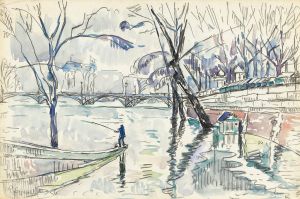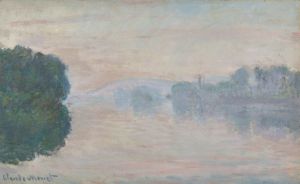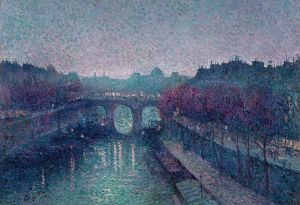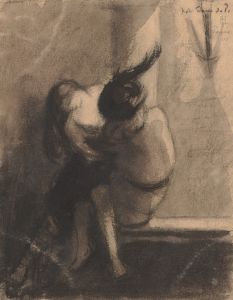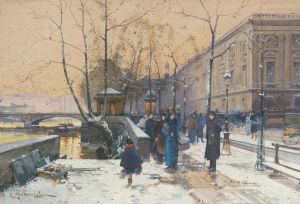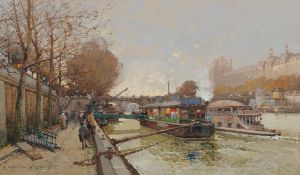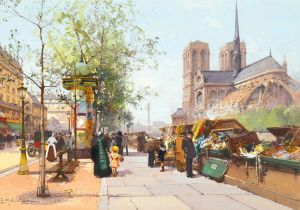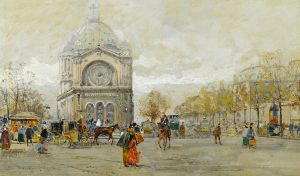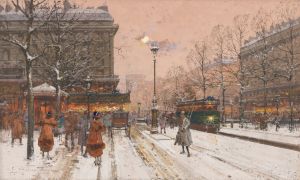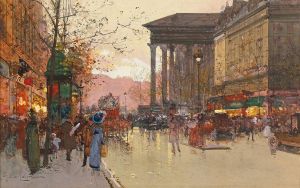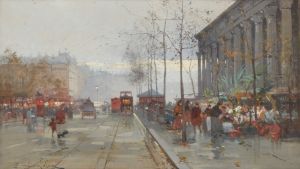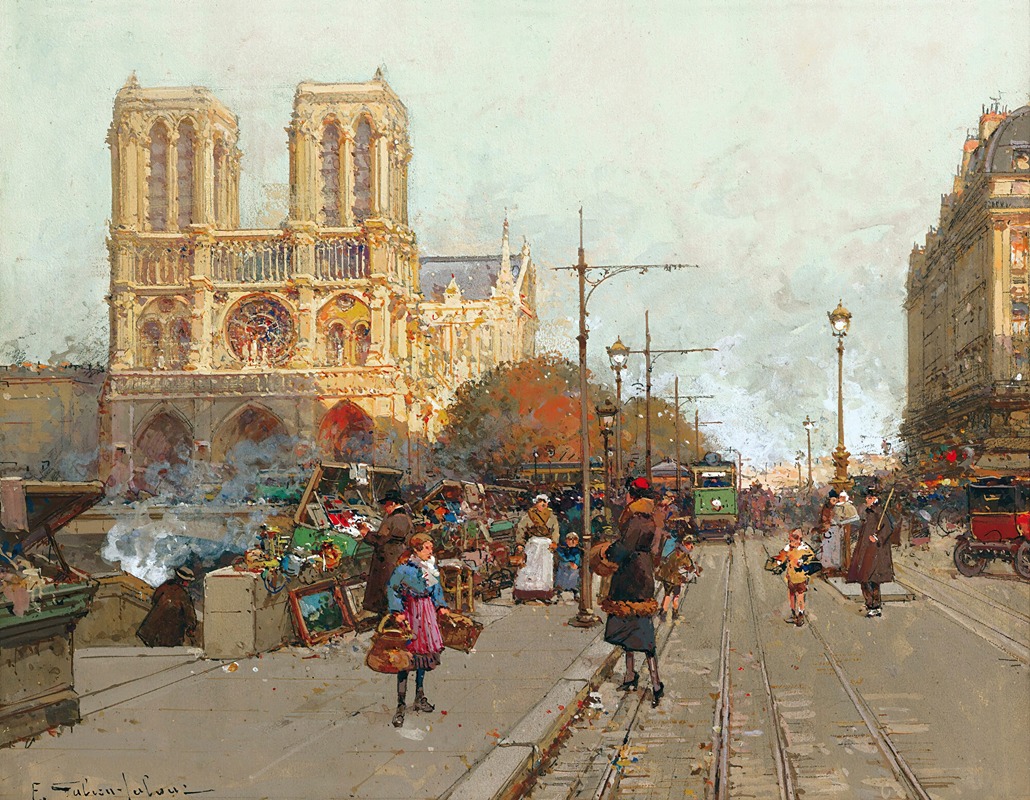
Notre Dame De Paris, Vue Du Quai De Montebello
A hand-painted replica of Eugène Galien-Laloue’s masterpiece Notre Dame De Paris, Vue Du Quai De Montebello, meticulously crafted by professional artists to capture the true essence of the original. Each piece is created with museum-quality canvas and rare mineral pigments, carefully painted by experienced artists with delicate brushstrokes and rich, layered colors to perfectly recreate the texture of the original artwork. Unlike machine-printed reproductions, this hand-painted version brings the painting to life, infused with the artist’s emotions and skill in every stroke. Whether for personal collection or home decoration, it instantly elevates the artistic atmosphere of any space.
Eugène Galien-Laloue was a French artist known for his detailed and atmospheric depictions of Parisian street scenes and landscapes. Born in 1854, Galien-Laloue became a prominent figure in the French art scene during the late 19th and early 20th centuries. His works are celebrated for their vibrant portrayal of urban life, capturing the essence of Paris during the Belle Époque era.
"Notre Dame De Paris, Vue Du Quai De Montebello" is one of Galien-Laloue's notable paintings, showcasing his characteristic style and subject matter. The painting depicts a view of the iconic Notre Dame Cathedral from the Quai de Montebello, a location along the Seine River that offers a picturesque perspective of the historic monument. This vantage point is popular among artists and photographers for its ability to capture the grandeur and architectural beauty of Notre Dame.
Galien-Laloue's work is distinguished by his use of light and color, which imbues his scenes with a sense of warmth and liveliness. In "Notre Dame De Paris, Vue Du Quai De Montebello," he employs a palette that highlights the interplay between natural light and the architectural features of the cathedral. The painting likely features the bustling activity typical of Parisian streets, with figures going about their daily routines, adding a dynamic element to the composition.
The artist often worked in gouache, a medium that allowed him to achieve a high level of detail and a luminous quality in his paintings. This technique is evident in the intricate depiction of Notre Dame's façade and the surrounding environment. Galien-Laloue's attention to detail and his ability to capture the atmosphere of a scene make his works valuable records of Parisian life during his time.
Galien-Laloue was part of a tradition of artists who focused on urban landscapes, and his paintings provide insight into the architectural and social changes occurring in Paris during the late 19th and early 20th centuries. His works are appreciated not only for their aesthetic qualities but also for their historical significance, offering a glimpse into the past of one of the world's most famous cities.
Despite his success, Galien-Laloue was known to be a private individual, and he often worked under pseudonyms, such as "L. Dupuy" and "Juliany," to avoid the constraints of exclusive contracts with galleries. This practice has sometimes made it challenging to attribute certain works to him definitively.
Today, Galien-Laloue's paintings are held in high regard by collectors and art enthusiasts. His ability to capture the spirit of Paris with such vibrancy and precision ensures that his works remain popular and continue to be exhibited in galleries and museums around the world. "Notre Dame De Paris, Vue Du Quai De Montebello" stands as a testament to his skill and his enduring legacy as a chronicler of Parisian life.





